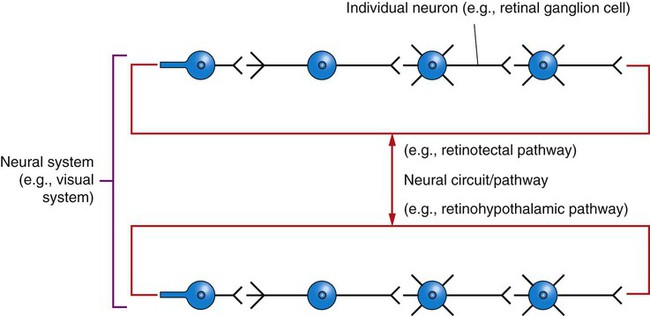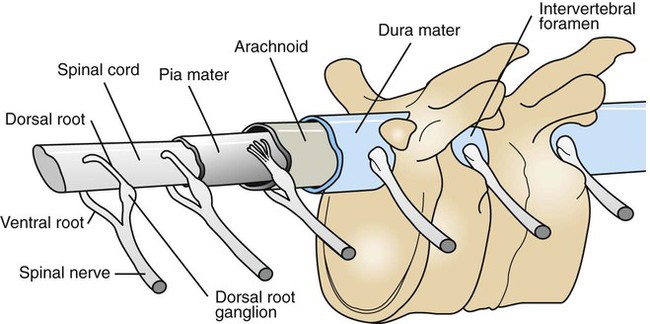1. The neuron is the major functional unit of the nervous system. 2. The mammalian nervous system has two major subdivisions: the central nervous system and the peripheral nervous system. 3. The central nervous system can be divided into six anatomical regions. 4. The central nervous system is protected by the meninges and cerebrospinal fluid. 5. The nervous system collects and integrates sensory information, formulates a response plan, and produces a motor output. Neurons do not exist in isolation; they are usually interconnected within neural circuits or pathways that serve a specific function (Figure 3-1). Neural circuits/pathways that are related in function are often collectively referred to as neural systems. For example, the retinotectal pathway provides information for reflex orientation of the eyes to the position of a light source, whereas the retinohypothalamic pathway carries information affecting the body’s physiological rhythms in response to light-dark cycles. These individual neural pathways are both part of the visual system. The central nervous system (CNS) is divided into the brain and spinal cord (Box 3-1). A series of protective bones surround the entire CNS. The brain is surrounded by the skull, and the spinal cord is surrounded by a series of cervical, thoracic, and lumbar vertebrae and ligaments. Peripheral nerve axons converge to form a single spinal nerve at each of the intervertebral foramina. Within the spinal canal, afferent sensory and efferent motor axons are separated; afferent sensory axons enter the spinal cord through the dorsal roots, whereas the efferent motor axons exit the spinal cord through the ventral roots (Figure 3-2).
Introduction to the Nervous System
The Neuron Is the Major Functional Unit of the Nervous System
The Mammalian Nervous System Has Two Major Subdivisions: the Central Nervous System and the Peripheral Nervous System
< div class='tao-gold-member'>
![]()
Stay updated, free articles. Join our Telegram channel

Full access? Get Clinical Tree


Introduction to the Nervous System
Only gold members can continue reading. Log In or Register to continue


